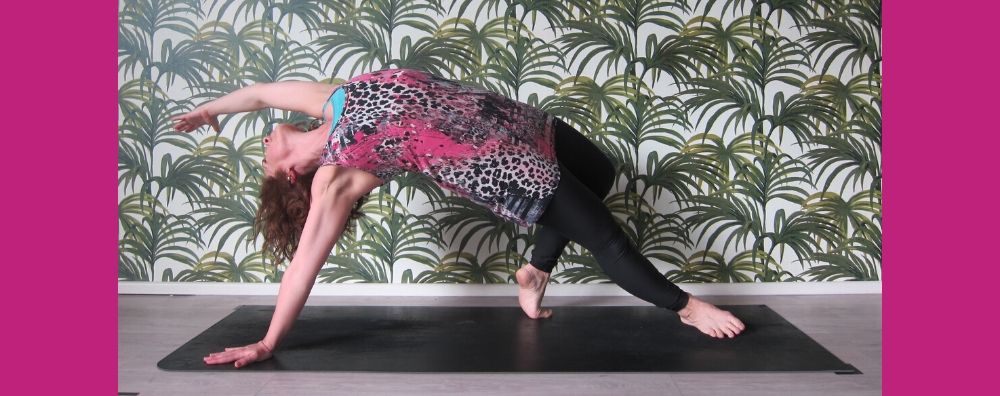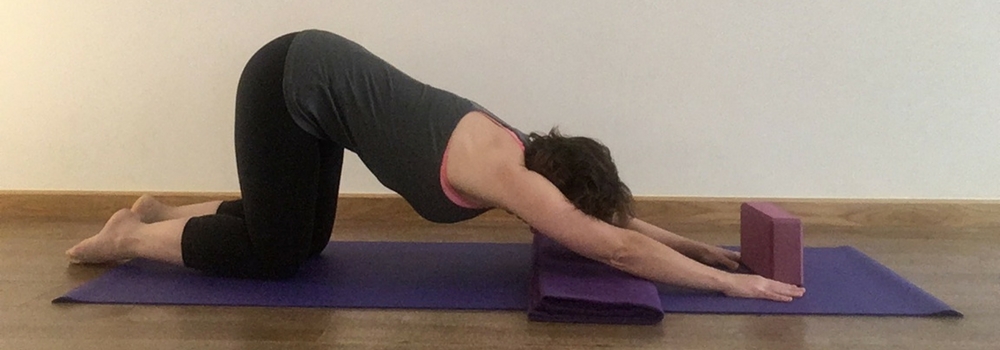
In honesty, for years I was what I called an on-off yogi. I loved yoga, I loved being in class, on my mat, moving, breathing and sweating. I’d go to class for a few weeks or months and would tell everyone how I went to yoga three times a week. But for some reason, maybe a job change, house move or a busy project at work, my practice would slow down, become erratic or stop altogether, but in my head I was still practicing at least three times a week. After a while I’d get back to class and every time without fail, I’d wonder why I hadn’t been for so long. This happened so many times… we’re supposed to learn from our mistakes right?
It wasn’t until I followed these steps that my practice became consistent and I started to experience the profound benefits of a truly regular yoga practice.
Routine
First and foremost create your own yoga timetable that fits perfectly within your schedule. It might be that you work shifts so you need two or three different timetables depending on your shift pattern.
Check out our timetable and if you genuinely believe there isn’t a class at a time that suits you, we urge you to get in touch. We’re always open to adding more classes if there’s demand. Our 6am and 7am sunrise yoga classes are there because people asked for them – and they’re now my favourite time of the week.
Prioritise your practice
Stick to your yoga timetable. Easier said than done, otherwise you wouldn’t be reading this blog, right?!! Here’s how… if somebody invites you out on Tuesday and that’s your yoga practice night, say no thank you. If you are asked to work late, and the work can wait until tomorrow, say so. More often than not, if we don’t prioritise our practice, anything and everything will override it. Changing your mindset around your practice will make all the difference. It won’t be easy to say no at first, but it will get easier and eventually it will become second nature.
Intention
What are you practicing for? Is it to keep the body mobile, increase flexibility? Or perhaps it’s to calm the mind or create a deeper connection to yourself. It might be purely physical or purely spiritual or a combination of everything. Whatever it is, we need to remember what we’re practicing for. Practicing with intention firstly makes our practice so much more meaningful, but secondly it will help to drive you back to class when you’re having a ‘can’t be bothered’ kind of day.
Persevere
Sometimes we hit a wall in our yoga practice, just like we do in every day life. Sometimes we’ll have days where our mind is darting around all over the place and our asana practice feels sluggish and pointless. But these are the times we need to persevere… I usually find in my own practice and I’ve witnessed it during teaching too, that when people hit a wall it’s usually because they’re about to have a breakthrough moment. So remember the points above, lose the ego that is questioning the quality of your practice and remember that you are a human being and not a robot and just enjoy being in the moment on your mat. Turning up is everything.
Tune in with your needs
As a human being there are days when our body feels achey, sore, tight, stiff, exhausted. We might be recovering from illness or injury or something inside might be telling us we need to slow down. These are the times when we most likely need to choose a more gentle, quieter practice that nourishes the body. Something like the yin or restorative classes might serve well during these times. At all times we need to approach our practice from a place of Ahimsa, possibly the most important ethical guideline in yoga, meaning non-violence or non-harming. So if a dynamic yoga practice is off-putting then tune in with your needs and choose something different instead.
So if you’re feeling inspired to get on your mat, then check out our workshops or regular timetable.
We can’t wait to welcome you to class.


